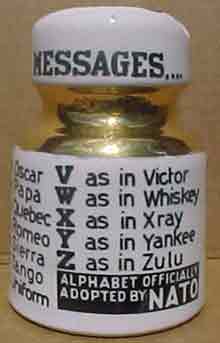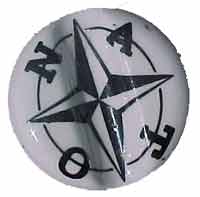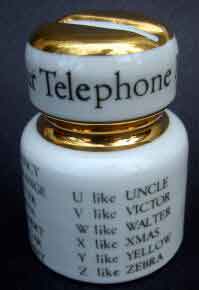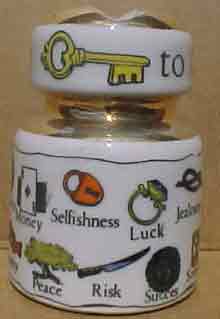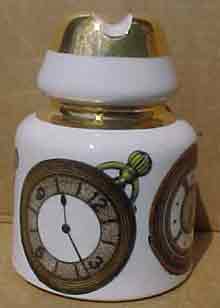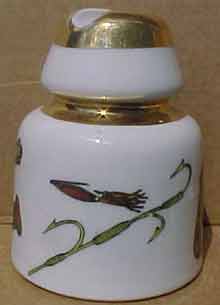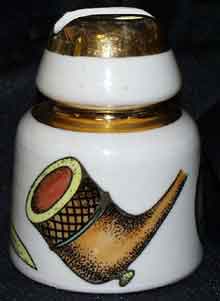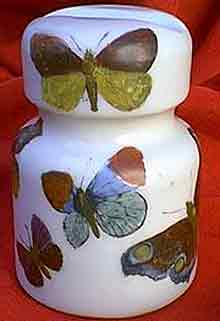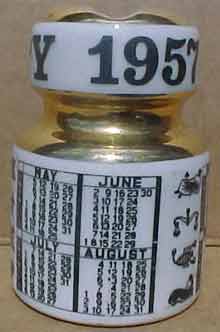
On a U-1668, there is gold trim on the crown and side wire. The top wire groove is not trimmed
The crown decal says "HAPPY 1957."
The skirt decal has a calendar for 1957. Note that the days are ordered in columns from top to bottom rather than across in rows. Signs of the Zodiac are also depicted.
Inside the pinhole is a decal of a hand holding a brush above the words
FORNASETTI-MILANO
M A D E I N I T A L Y
Other versions of this include:
1. On a U-1668. (Crown decal) HAPPY 1956 (Skirt decal) [Calendar with Zodiac symbols] (Pinhole decal) [Hand holding a brush]/FORNASETTI - MILANO/MADE IN ITALY
2. On a U-1668. (Crown decal) HEUREUX 1959 (Skirt decal) [Calendar with Italian spellings and Zodiac symbols] (Pinhole decal) [Hand holding a brush]/FORNASETTI - MILANO/MADE IN ITALY
3. On a U-1668. (Crown decal) HAPPY 1958 (Skirt decal) [Calendar with Zodiac symbols] (Pinhole decal) FOMOS ETI MILANO/MADE IN ITALY. This version was first reported by Gregg Gibbs of Garden Grove, California (see Tod, May 1969 and Tod, July 1974).
4. On a U-1714. Crown and side wire groove gold trim. The top wire groove is not trimmed. (Crown decal) HAPPY 1964 (Skirt decal) [Calendar with numbers running top to bottom rather than left to right] {Note: There are no Zodiac symbols} {Note: There is no pinhole decal}
